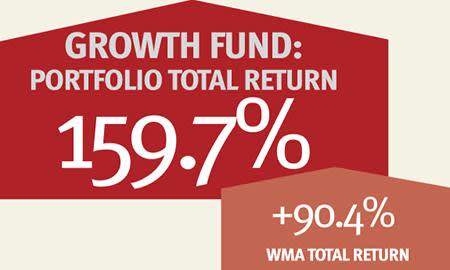Ever since the inception of the Growth and Income portfolios in January 2009, both have benefited from an emphasis on decent yielding equities and higher-yielding corporate bonds. Believing that interest rates would remain low for longer than consensus forecasts, and cognisant of the positive impact of dividends on portfolio returns over the longer term, I hoped both asset classes would do well in a world where yield was in short supply.
Broadly speaking, this has worked. And for all the talk now of interest rates rising and the bursting of the 'bond bubble', I remain of the view that such an approach in a diversified portfolio will continue to reap rewards - as illustrated by recent changes to the Growth portfolio.
The complete picture
There has been some excitement in the media recently as the FTSE 100 index has hit its all-time high. It has taken 16 years to break back through 6,930. Yet this index, like the broader FTSE All-Share index, does not include dividends paid by the underlying companies. As such, it does not give the complete picture. Add in those dividends, and it becomes a different story.
Despite all the talk of markets moving sideways, the Association of Investment Companies (AIC) - the investment trusts' trade body - recently highlighted that £100 invested in the FTSE All-Share index in December 1999, with dividends reinvested, would have grown to over £180. This is well ahead of inflation over the same period.
An income bias is therefore not just for those who want an income. A focus on total return - capital plus income - can reap rich rewards. It can also help cushion portfolios from market volatility. It is therefore no coincidence that the Growth portfolio is generating a useful yield of 2.6 per cent, the Income portfolio is yielding just over 4 per cent, while my own website's 'Winter' portfolio is yielding 5.5 per cent.
City Natural Resources
Space did not allow me in last month's column to explain why I had added to the Growth portfolio's existing holding of City Natural Resources High Yield Trust (CYN) during January. The commodities sector has had a torrid time of late. With economic growth slowing, demand from China dropping, and the oil price recently collapsing, in part because of fracking, commodity prices have been in retreat for almost four years.
But on anything other than a short-term view, I suspect prices have now fallen too far. The powerful forces of decreasing commodity reserves and increasing demand remain a constant over the longer term, punctuated by short periods when either supply or demand or both become temporarily distorted.
Crude at the current price is unsustainable for either the Gulf sheikhs or fracking barons. Government spending programmes need to be funded, while some investors are questioning the financial sustainability of various shale gas operations. Supply will realign with demand one way or the other. Meanwhile, 2014 saw a record sum spent on developing new oil supplies, and yet less has never been found.
As for base metals, supply and demand appears more evenly balanced. Supply is sufficient for now, but there has been relatively little new development and, again, no new big low-cost finds. Meanwhile, the mining companies have rarely looked cheaper and yet promise improved dividends.
This all makes CYN attractive. A very experienced team led by Will Smith, a near 20 per cent exposure to gold and silver miners which look exceptionally cheap, exposure to 'soft' commodities and rare earth metals, and a 5.5 per cent yield supported by one and a half year's worth of revenue reserves, all adds to the attraction - especially when standing on a 20 per cent discount.
New City High Yield Trust
During February, I have also added to the Growth portfolio's existing holding of New City High Yield Trust (NCYF) which specialises in the higher-yielding corporate bond and fixed interest markets. Fixed income represents around 80 per cent of assets with the balance made up of equities, including convertibles and preference shares. The fund is run by a well respected team led by Ian Francis.
The yield on NCYF is 7 per cent at time of writing, with little help from gearing, and with three-quarters of a year's dividend in revenue reserves. It has a good track record on growing the dividend, which is still generated from the portfolio's income without any recourse to the reserves, which are themselves still growing. There is an element of inflation protection courtesy of the 20 per cent equity exposure - Ian has the flexibility to modestly increase this should he wish.
Despite much talk of bond market bubbles, I suggest value can still be found in the higher-yielding area of the market. Indeed, this area may be less affected by any bond sell-off sparked by rising inflation, in part because there is a larger yield margin and because the risk profile may improve regarding company liquidations among the lower-grade issuers as the economy moves forward.
Recently, NCYF has been tapping the market for additional funds and has placed around 60m shares over the last year. This has contributed to the premium coming in a little to around 3-4 per cent, having been as high as 10 per cent. Given my belief that interest rates will remain relatively low for some time despite market chatter, and NCYF's good track record, now is not a bad time to add to holdings.
Other portfolio changes
I have also introduced Perpetual Income & Growth Trust (PLI) to the Growth portfolio during February. Space here does not allow a full explanation. Suffice to say, I continue to believe the UK equity market looks relatively attractive, while PLI offers a 3 per cent yield and strong track record - more in next month's column.
These purchases have been funded by reducing further in February my biotechnology holdings after a very strong run, for reasons cited in last month's column ('Recycling profits', 6 Feb 2015). Both International Biotechnology Trust (IBT) and The Biotech Growth Trust (BIOG) were top-sliced, and together now represent around 8 per cent of the portfolio.
I have also top-sliced the portfolio's holding in Strategic Equity Capital (SEC) after another tremendous run helped by the 10 per cent discount disappearing since being bought, although I remain positive about its longer-term prospects. Finally, I have reduced my holding in Baillie Gifford Japan Trust (BGFD) after a good run - the trust standing close to NAV when doing so.
There were no changes to the Income portfolio during February.











